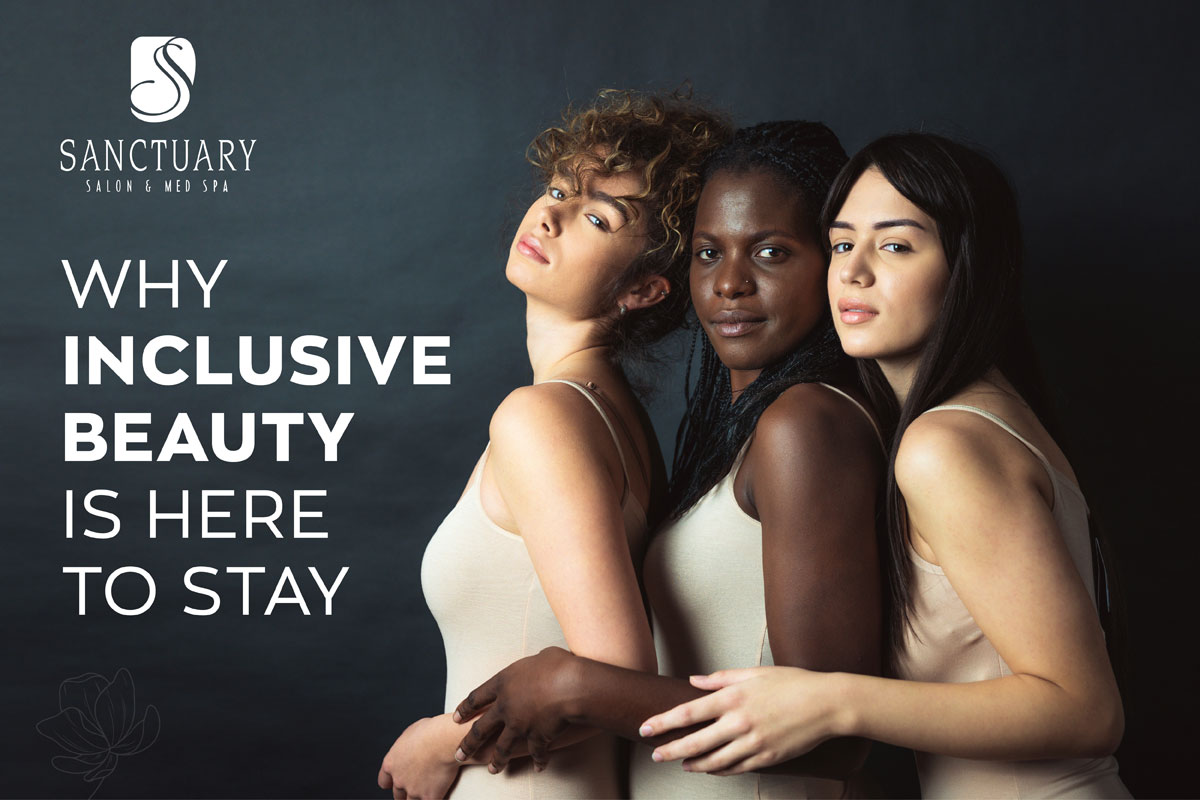
Why Inclusive Beauty is Here to Stay
Beauty, health and cosmetics-related companies are increasingly embracing the idea of “Inclusive Beauty”. This term has come to mean a broadening of traditional definitions of what it means to achieve your ideal self and disseminating imagery beyond those of culturally prevalent but impossible beauty standards to also include those who heretofore weren’t a part of the targeted consumer pool.
Representation and inclusion of all faiths, races and ethnicities, the LGBTQ community, gender identities and different lifestyles is an increasing trend and a movement that reflects the diversity of the world we actually live in.
The implication of this on the beauty industry is that the model of appealing to a narrow group of homogeneous individuals – in particular mostly young to middle-aged, affluent white women of a certain body type – is not valid anymore as they are no longer the only group with the financial means to spend on improving their appearance and health. This is a considerable win-win for everyone – the beauty industry and the consumers of cosmetic products.
‘Real Beauty’ is in Vogue
Some of the best examples of inclusive beauty campaigns are the well-known ‘real beauty’ ads in which big brands showcase everyday ‘real women’ (and oftentimes men) from a diverse range of backgrounds; coming together to share their commonalities, appreciate their differences (skin tone, body type, hair) and redefine the concept of beauty.
In the age of social media, celebrity endorsements and large-scale marketing campaigns are insufficient. The generation of millennials hungers for authenticity, or at least a semblance of it in marketing communication. This generation of consumers finds it hard to associate with products they don’t feel genuinely connected to. Embracing inclusivity can narrow the gap significantly, but only if it is done genuinely and backed up with tangible action.
Representation of Beauty
Beauty is no longer the exclusive domain of the stereotypical 18-34 age demographic of women and housewives and hasn’t been for some time. This is so because everyone – from people of colour to other minorities and people following ‘alternative’ lifestyles – is finally being included. The so-called ‘Real’, everyday people are also being welcomed and featured in what was for a long time, a narrow definition of what beauty meant.
Inclusivity and Emotions
Some of the best examples of inclusive beauty aim to affect you emotionally. When you see someone in your likeness and relate with them, you tend to identify with them and recognize the commonalities in experience. The more privileged crowd often takes for granted how powerful it is to be represented in a good light in society – either through popular culture or advertising.
The inclusive beauty movement intends to bring everyone together to share their commonalities and identities. It’s important to realize that we’re in it together and recognize that diversity adds more vibrancy and variety in life. Seeing yourself represented in popular media is a stirring experience.
Aren’t We All the Same?
Inclusivity is important to recognize both that everyone is different and to celebrate this diversity, whilst also recognizing that we are more alike than different. Everyone deserves to feel exceptional and unique yet we must realize that we all belong to a larger collective community.
Throughout history, our different skin colours and ethnicities have been a cause for much disagreement. Thankfully, the inclusivity movement recognizes all skin shades and ethnicities as equal and effectively the same. This has been reflected in inclusive beauty campaigns and products as well.
Inclusivity is Good for Business
It should be patently obvious that for-profit brands have their self-interest in mind when appealing to their customer base. However, bringing about better, more equitable representation that reflects the overall world and society we live in is a noble endeavour no matter what.
The breaking down of previous gender or racial barriers in ways that better portray a diverse range of human experiences in popular media helps better understand everyone. This is a commendable effort as it is essential to keep up with evolving societal values.
It is highly imperative that we as a society work to not only understand each other but also ensure that everyone is properly included, represented and heard. This newfangled trend of moving towards more inclusive representation and consumer communication has been a long time coming and reflects a progressively less homogenous society in which the needs, views and lifestyles of one and all are seriously taken into consideration.
Inclusive beauty results in better products and happier customers as people feel more included and part of the mainstream. When we celebrate our differences, we also realize how similar we are.


0 comment